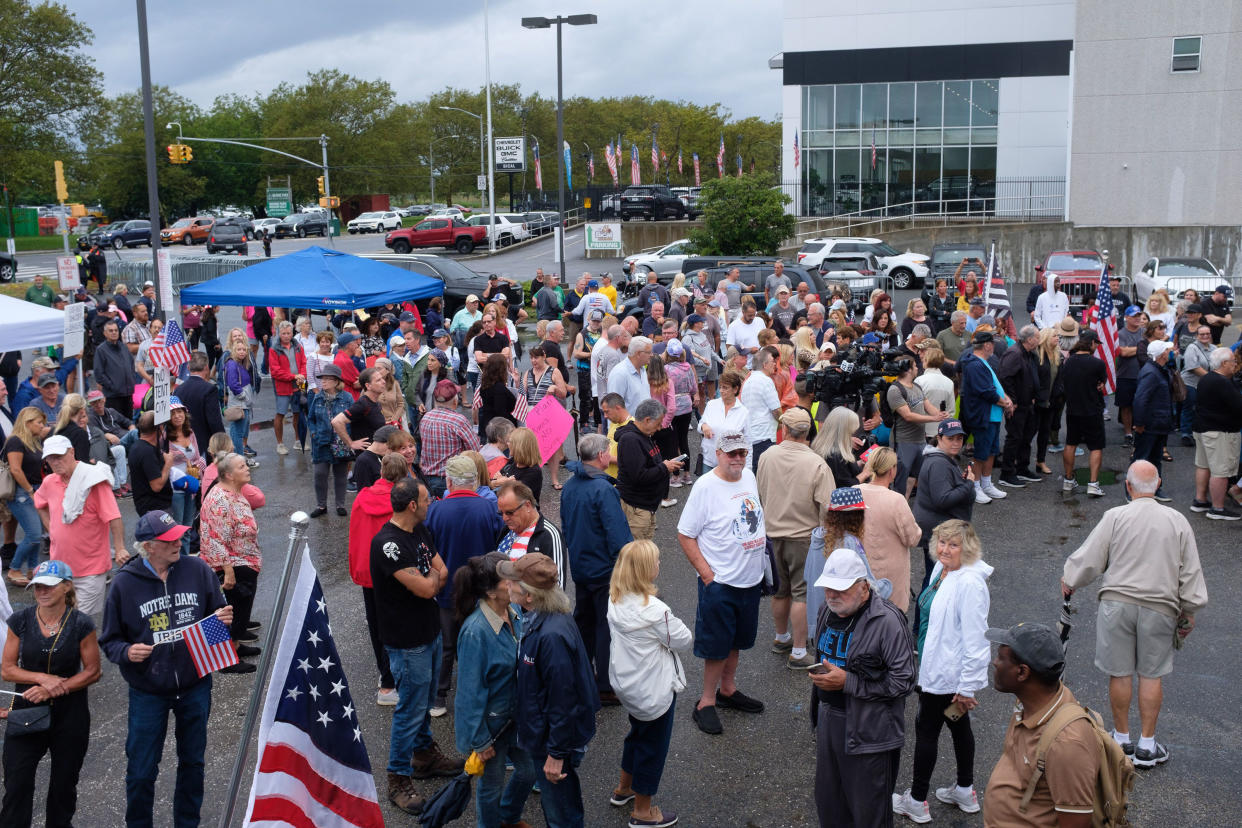NYC mayoral officials give tour of Floyd Bennett migrant shelter in radically different setup for families

NEW YORK — Top officials from New York Mayor Eric Adams’ administration offered a glimpse Monday into the sprawling migrant shelter complex set to open within days at Floyd Bennett Field in Brooklyn, a radically different setup for families that is raising questions over its suitability.
During a tour with reporters, Emergency Management Commissioner Zach Iscol and Health + Hospitals executive Ted Long emphasized what their boss, Adams, has been saying for weeks — that the city’s shelter system is overflowing and that the Adams administration is doing the best it can with dwindling resources.
“We are at capacity,” Iscol said. “We’re doing everything we can to keep up with the demand. We’re very grateful to the governor and to the White House for giving us this piece of land. It’s not ideal, but we are doing the best we can with what they’ve given us.”
The sprawling site, which President Joe Biden’s administration granted permission for the city to use in August in a deal brokered by New York Gov. Kathy Hochul, sits atop federal land and is in one of the most remote parts of Brooklyn. For weeks, the site’s expected use as a migrant shelter for families with children has been a lightning rod for controversy, with City Councilwoman Joann Ariola suing the city to block the plan from moving forward.
On Monday, Iscol and Long walked reporters through a series of massive tents at the site, which once served as an airfield, with both of them at turns ticking off the particulars about what’s housed in each tent and the function they serve.
The two also tried to address concerns about flooding — the site is on a floodplain — as well as fire safety, which recently cropped up as an issue when a migrant shelter was shut down after failing an FDNY inspection.
“These are not firetraps,” Iscol said. “Every single space has issues that we need to address and mitigate.”
He conceded that there has been no “fire inspection per se” at the Floyd Bennett site, though.
“(W)e work with (FDNY) to understand what are their concerns,” he said. “They have given us a list of things they are concerned about. We have met all the requirements to sort of meet all of their concerns with those lists. There are a couple of other things we’re still working through to try and mitigate, but we’re essentially done.”
He also noted that, like any average New Yorker who lives in a floodplain, migrants at Floyd Bennett would be evacuated in the event of an extreme weather event. Such evacuations, however, have proved logisitically difficult in the past.
There are a total of four dormitory tents at Floyd Bennett right now and several others that serve as an intake center, a 24/7 cafeteria and a space for migrant kids to do homework and for parents to make unlimited phone calls.
The dormitories are of particular concern to advocates, especially given that they’ll soon serve as a home to migrant children.
The tents are outfitted with what city officials are calling “pods” — bare-boned, partitioned rooms inside the dormitories where the migrants will stay. There are 128 pods furnished with cots, floor lamps and convertible cribs now set up at Floyd Bennett with the ability to house about 500 people.
The doors lock — and there will be 24-7 security, according to Long — but the rooms have no ceilings, which could leave them open to intrusion if someone is intent on getting in.
Legal Aid Society attorney Josh Goldfein, who’s planning to tour the shelter Tuesday and whose group is fighting the Adams administration in court over its attempt to suspend the city’s right-to-shelter decree, said that, based on photos of the shelter, the pods could be characterized as “semicongregate” housing units, a potential legal no-no.
Under state law, municipalities in New York are prohibited from housing homeless children in congregate shelters due to documented instances of abuse taking place in such settings.
“We’ll see for ourselves tomorrow ... but people can’t sleep if they’re worried about people jumping over a 10-foot wall to hurt their kid,” he said. “There’s plenty of research to indicate why it’s bad to house children in these settings.”
_____


